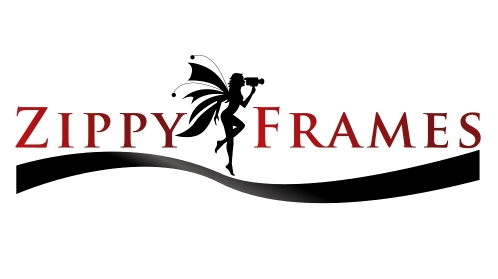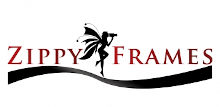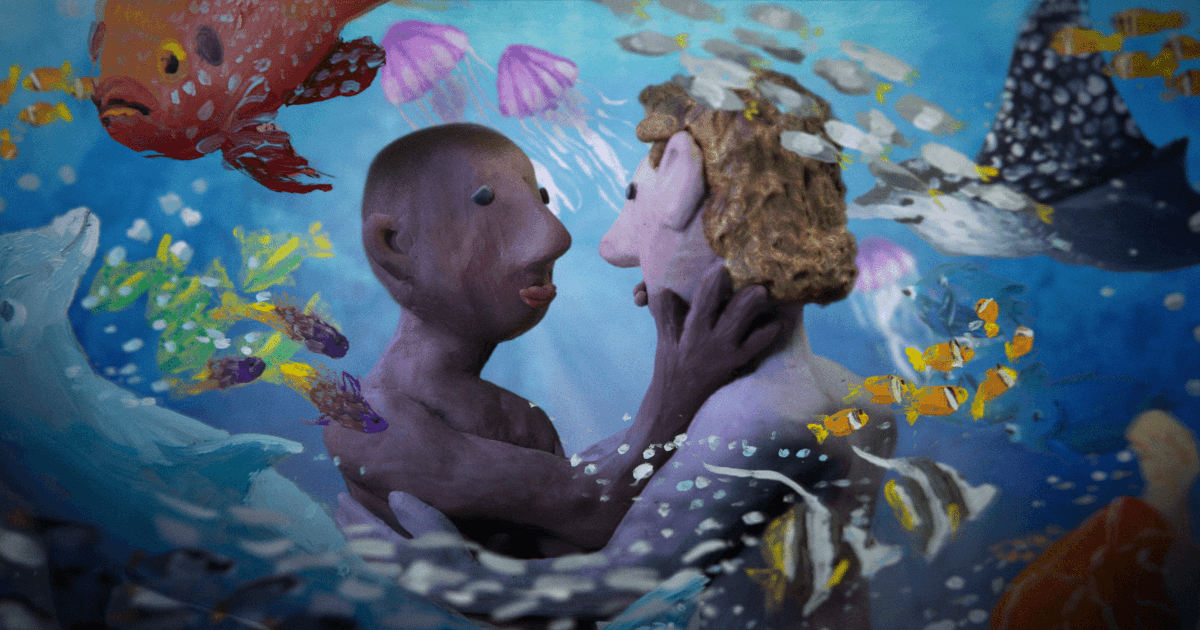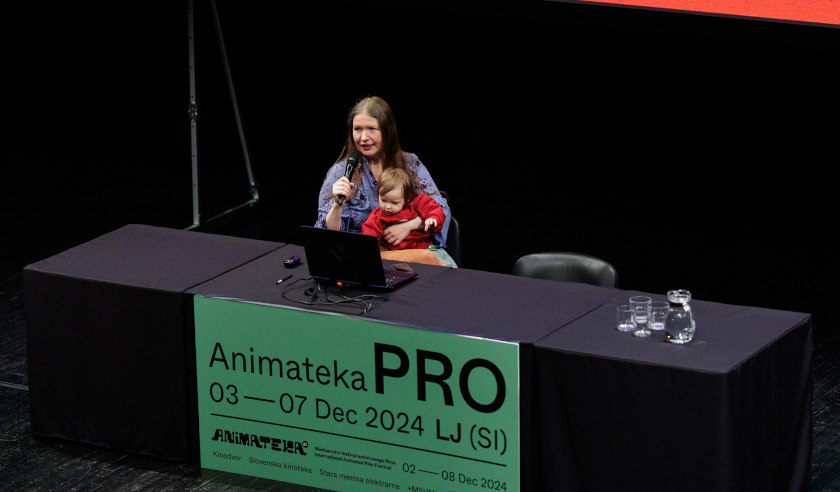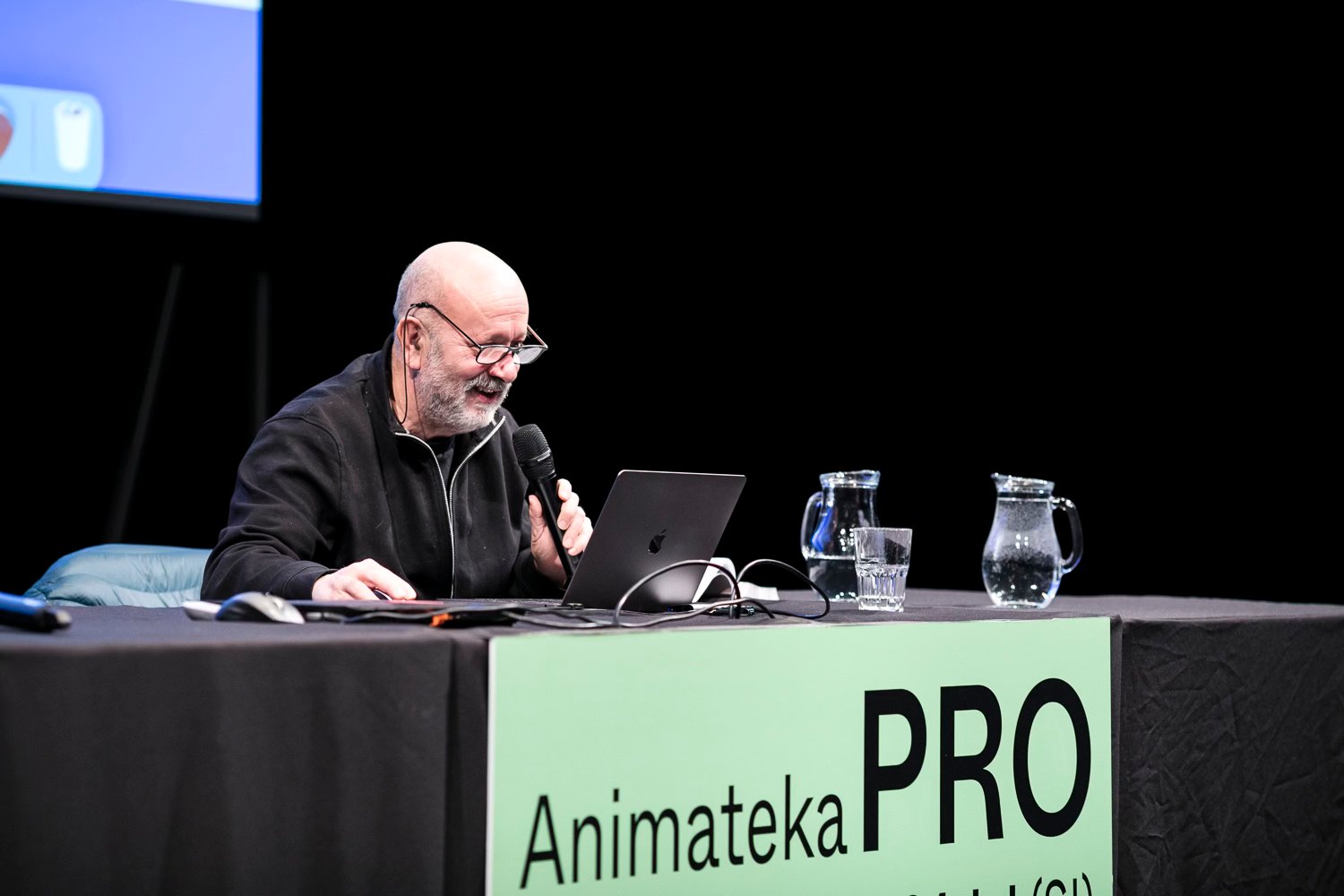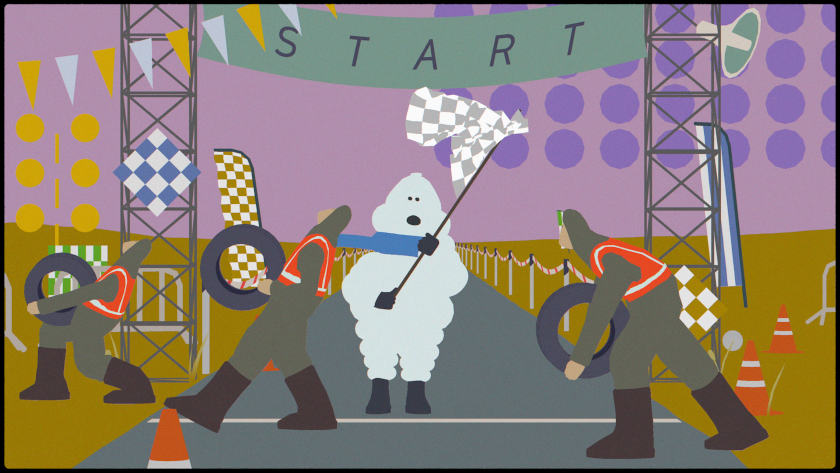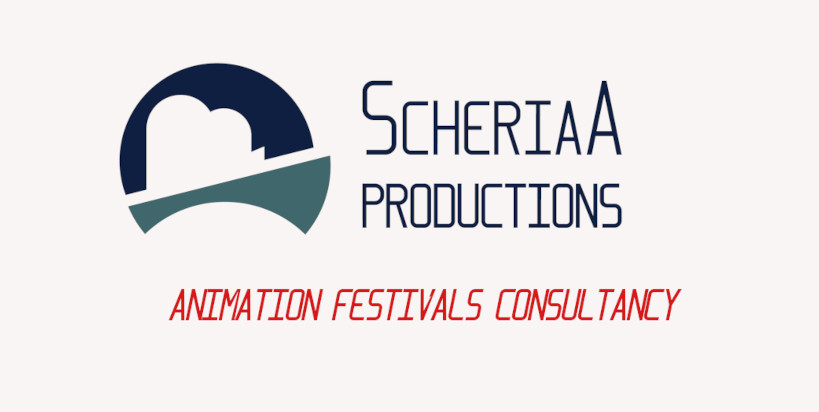Animation Is Life: European Young Talents at the 21st Animateka Festival (GoCritic! Review)
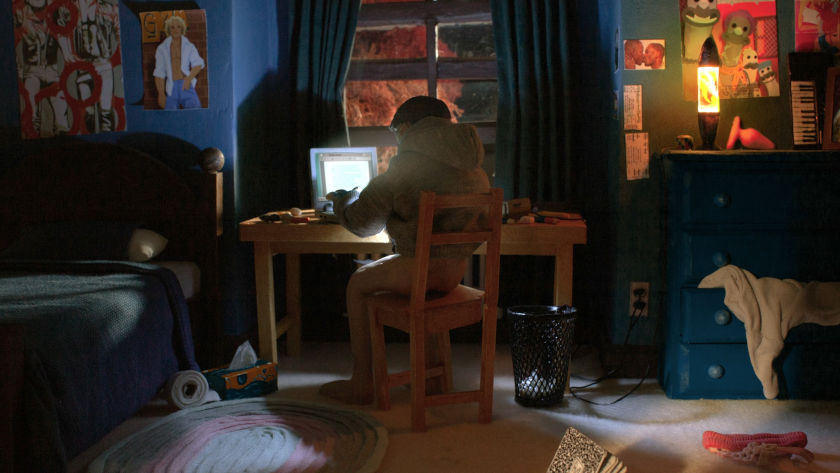
On the final day of the 21st Animateka, Ljubljana's international animation film festival, the GoCritic! cohort sat down with filmmakers from the European Young Talents programme for a roundtable discussion. As the conversation wrapped up, a final question was thrown to the filmmakers.
“What is animation to you, in a word?”
“Freedom,” said one.
“Life,” said another.
These reflections resonated throughout the 2024 European Young Talents programme. In these films, adventurous, curious, and open-hearted filmgoers could find personal works that represent desires, memories, hopes, and fears. It’s remarkable how immediate an abstracted art form can feel.
Animation begins as ideas. Daniel Sterlin-Altman’s ‘Carrotica’ opens with typing on a keyboard, the film’s title appearing letter by letter on an old CRT monitor. The carrot erotica in question acts as a stand-in for unspoken queer desire, its sense of fantasy and abnormality in the eyes of the writer heightened through the unreality of the anthropomorphized vegetable.
We follow a gay teenager and his mother (the latter is heavily implied to be lesbian). Reminiscent of the unorthodox sexual awakenings of the films of Todd Solondz, coupled with the lived-in empathy of Miranda July’s work, ‘Carrotica’ follows a long line of sexually exploratory independent features – but relatively few before this have been animated.
Stop-motion is perhaps the most fetishistic of animation modes, with the filmmaker voyeuristically manipulating small characters and their worlds in intricate, minute detail. Like the writing of erotica, stop-motion is often a bedroom hobby, conducted in spare moments. The hands-on nature of stop-motion makes it a pleasing fit for a film whose characters wonder what it would be like to touch another. Felt and fabrics are prominent within the richly textured frame, miniature versions of familiar sensations. As the audience, we too know what it would feel like to touch this world.
Where Sterlin-Altman’s film truly shines is not in these two lonely souls growing to understand themselves but in how they grow to understand each other. ‘Carrotica’ culminates in a tender moment of familial and queer solidarity that feels remarkably identifiable and authentic. A crudeness reminiscent of the Adult Swim series ‘Robot Chicken’ gives way to something deeply felt – in all senses of the word.
Moving from a fantasized coupling to an uncoupling, ‘Windows from the South’ imagines a relationship as a shared surrealist landscape – the couple within the picture looking out upon it from the windows of their gaunt house, located atop a spiraling hill. Soundtracking the animation is an audio conversation between filmmaker Eugen Bilankov and his ex-partner Ivana Šundov, frankly discussing the end of their relationship.
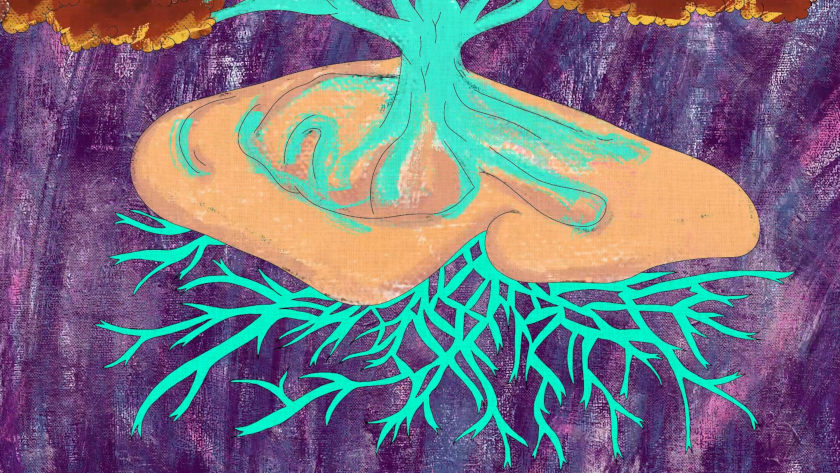 Windows from the South
Windows from the South
It's a compelling mode of documentary autofiction. Terence Nance’s 2012 feature ‘An Oversimplification of Her Beauty’ utilizes animation similarly, with sequences used to convey and visualize Nance’s experiences with different lovers and his perceptual memory of each. But ‘Windows from the South’ is a more empathic project than Nance’s. Rather than focusing on his own subjectivity, Bilankov forges a mesmeric visual landscape out of the space between the two lovers – personified elements colliding, combining, and clashing.
The couple’s nude forms are rendered on an exaggeratedly large scale, mirroring the space that the other person takes up within our partnered minds and lives. Sexuality is also foregrounded in this short, but here it’s fragmented: disembodied torsos, limbs, and heads walked upon and looming large in the surrealist skies.
The project is distilled in a climactic sequence: the conflicted movements of two anthropomorphic planetary spheres, one phallic, one yonic, drawn to and repelled by each other as if magnetized. The deeper meaning of much of the surrounding imagery feels impenetrable, but perhaps it should – this is, after all, a personal document. The couple’s relationship may be over, but their entanglement is immortalized in film.
Memory is also given a tangible, lasting form in Ana Bojanini’s transportive ‘In these moments I feel at home, I feel safe’, a dreamy and comforting memory space in watercolor played out on a white canvas. Hazy scenes are soundtracked by library sounds, pieced together to create a convincingly atmospheric (if evidently artificial), whole. The fragmented nature of the sound is effective, reminiscent of a guided audio meditation.
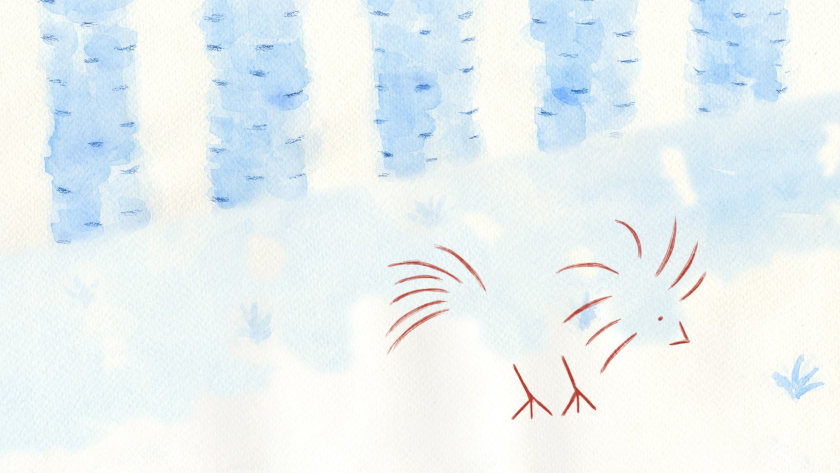 In These Moments
In These Moments
Every element of Bojanini’s film evokes the way in which we remember moments. Objects and characters are marked on the canvas not with outlines but with drawn details. A bird is shown to be such through the presence of twig-like feet and feathers in simple lines, nothing more. Figures remain transparent, storyboard-esque sketches, not filled in. We mentally complete the gaps left by the signifiers.
When recalling precious memories, our minds recall fragmented details, not necessarily the whole picture. In this, Bojanini’s film feels experientially honest and true. Sometimes what is most evocative, and most keenly remembered, is that which is simple.
Tatjana Theuer’s ‘Rise Age’ is concerned with life on a larger scale, taking a macro view of ecological issues with the help of some highly marketable mascot characters. Initially introduced in a black, void-like space, these seven lively and adorable 3D-modelled critters chant and move their bodies in time to the soundtracking beat in a manner reminiscent of the tiny warriors in the Sony rhythm game ‘Patapon’. Their thin, vertical forms mirror a line of trees, then a row of parasols – these creatures are in harmony with their environment, synchronized.
Resembling the kind of squishy LED nightlight taken home by enthusiastic children from IKEA, the creatures have the geometric simplicity and beady eyes of mascots designed for advertising PSAs – and therein lies the effective Trojan horse of Theuer’s film. The music becomes layered, the chanting gets more intense, faster – and with it the critters’ troubles build. Their happy song is disrupted, parasols and lighthouses collapsing.
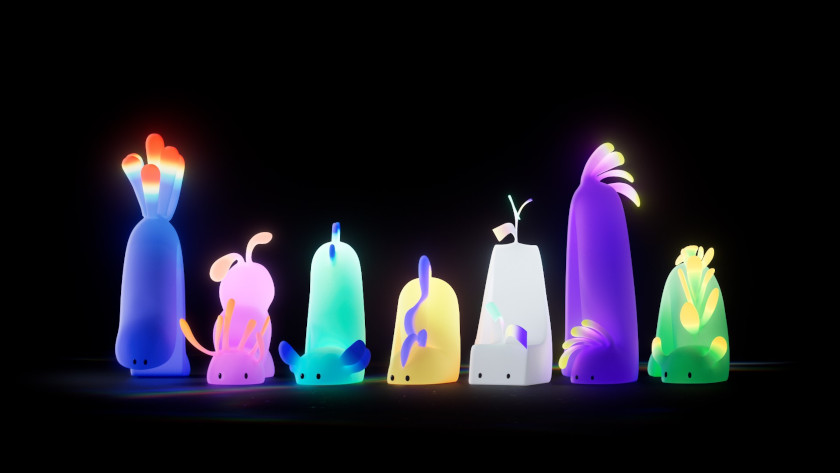
Rise Age
They try to go on singing and moving regardless, but their efforts are increasingly thwarted. In the final moments, the scene zooms out to reveal LED lights in the shape of national maps, and infographics confronting us with the raw facts of rising sea levels. The screen splits and splits to reveal more and more locales affected.
Animation can shine a different perspective on our lives. It’s a form through which we can remember, mapping memory on blank canvas mood boards. Through animation, we can reconcile that memory, exploring our innermost thoughts, desires, and fears, in ways that probe deeper than words. Above all, it’s a medium through which we can chart our futures, raise awareness through abstraction, and appeal to our inner child. If the films exhibited in this year’s European Young Talents programme are anything to go by, that future glows bright indeed.
Contributed by: Blake Simons
